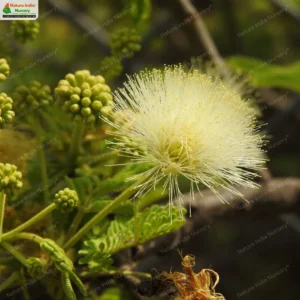Vateria indica, commonly known as the White Dammar or Indian Copal Tree, is a large evergreen tree that can grow up to 40 meters tall, occasionally reaching up to 60 meters. It features a cylindrical, straight trunk with smooth, grey bark that has green and white blotches. The leaves are simple, alternate, and leathery, with an elliptic-oblong shape. The tree produces small, white, fragrant flowers in clusters, and its fruit is a 3-valved capsule containing a single seed.
Habitat
Endemic to the Western Ghats mountains in India, Vateria indica is typically found in tropical wet evergreen forests at low and mid-elevations, below 1200 meters. The tree is considered vulnerable due to habitat loss.
Planting and Care
-
Propagation: Can be propagated from seeds. Seeds should be sown in well-drained soil and kept moist until germination.
-
Soil: Prefers fertile, well-drained soil but can tolerate a range of soil types.
-
Watering: Requires regular watering, especially during dry periods, but is relatively drought-tolerant once established.
Additional Information
-
Economical Values:
-
-
Resin: The tree produces a white, aromatic resin known as “dammar,” which is used in varnishes, incense, and traditional medicine.
-
-
-
Medicinal Uses: Various parts of the tree are used in traditional medicine to treat ailments such as respiratory disorders, skin conditions, and digestive issues.
-
-
-
Ornamental: Due to its attractive foliage and flowers, Vateria indica is also planted as an ornamental tree in parks and gardens.
-
-
Wildlife Significance:
-
-
Habitat: Provides shelter and nesting sites for various bird species.
-
-
-
Food Source: The flowers attract pollinators, and the seeds are consumed by birds and small mammals.
-




